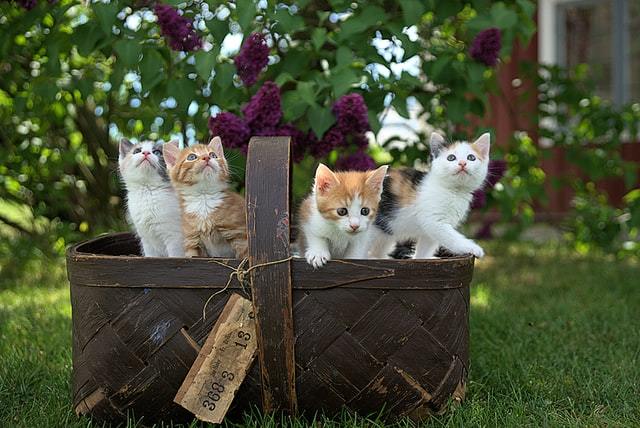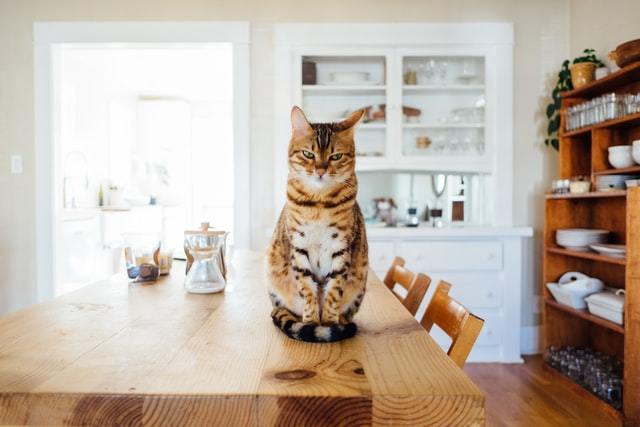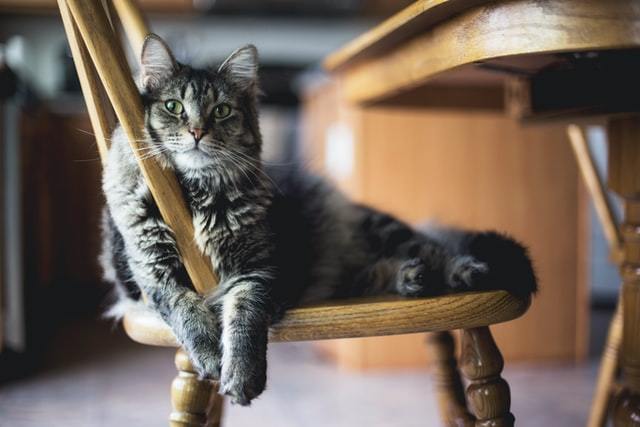Article at a Glance
Cats with no teeth can live normal lives and we do not need to make many adaptations for them.
- For most, the reason they are toothless is because they have suffered with dental disease for the previous years.
- Cats can lose teeth naturally or they may be surgically removed.
- Most will eat a canned (wet food) diet but it isn’t exceptional for a toothless cat to eat hard biscuits.
What are the Causes of Tooth Loss in Cats?
It is important to mention that all cats lose their deciduous (milk) teeth between the ages of 3 and 6 months. This is to make way for their adult teeth. We may not see any signs of this or we might notice that some cats have red gums, excess drooling and a reduced appetite. Sometimes we will see the teeth on the ground but oftentimes we will not. This is because the cat has accidentally swallowed the tooth, usually when eating or asleep.
It is possible for cats to damage their teeth when they e.g. chew on stones, fall from a height or are in a car accident. Fractured teeth may fall out by themselves, especially if they have become loose. However, sometimes a vet will need to remove them. If the pulp is exposed, there is a risk of infection and the sooner the tooth is removed the better.
Those cats who have suffered with periodontal disease for a long time or who have had gingivostomatitis are the most likely to end up toothless. It may be that their teeth have been surgically extracted or that they have fallen out over the years.
This study discusses how extracting most (or all) of a cat’s teeth can help to resolve stomatitis for many individuals. After extraction, cats suffered from less inflammation and owners reported less behavioural issues. Cats without teeth were happier and more comfortable.
While alternatives to tooth extraction are sometimes an option (as discussed here), endodontic treatment is not always available. It can be expensive and may not be effective in all cases.
How Does a Toothless Cat Eat?
With greater ease than you might expect! I often hear from worried owners who fear their cat won’t eat at all once their teeth have all been removed. I reassure them by letting them know that their cat will likely be able to eat better than before. That’s right. If your cat has advanced dental disease and/or stomatitis, the relief they feel when the teeth are removed will be huge. As the gums settle down and the pain subsides, your cat will begin to eat like they haven’t done for many months.
Oftentimes, a cat who has had dental disease for a while has stopped using their teeth to eat and, if anything, their teeth simply get in the way.
Initially, your cat’s gums may need time to adjust. During this time, it can be useful to offer wet food and/or kibble that has been soaked in water. Mushy food is easier to manipulate into the mouth and swallow. A cat’s barbed tongue is used like a mini shovel to propel the food from outside the body down the food pipe.
Those cats who have been toothless for a while can usually manage eating anything a ‘normal’ cat can. This even includes dry food.
What Should You Feed a Cat with Few or No Teeth?
Most cats do best on a tinned food diet. Feed your cat for their individual medical needs and life stage. Monitor them while they eat to ensure they are coping well. They should not be dropping food from their mouth or spitting their food.
It is also a good idea to monitor their weight and body condition score, to ensure their calorie needs are being met.
Immediately after any dental surgery, your cat may need extra tempting food that is easy to eat. Consider mushy fish, chicken or scrambled eggs. You can use a food processor and make the food into a puree. This is just a temporary diet for the first few days as they adjust to their new toothless mouth. It can help to warm the food and to hand feed. Similarly, adding some warm water can create a tempting gravy that proves hard to resist.
Some cats are used to eating kibble and have a preference for it. If your kitty insists on continuing to eat hard food this is not generally a problem. In fact, even kibble eaters with teeth do not always use their teeth to chew the food.
You may consider offering nutritional supplements or nutraceuticals, to keep your kitty in tip top shape. Probiotics, omega fatty acids and joint care supplements may all be indicated in the older, toothless cat.
Additional considerations
Ensure your cat continues to check your cat’s mouth at each check-up. While they will no longer develop dental disease, we still need to check for e.g. oral masses or ulcers.
Some toothless cats find their tongue naturally ‘lols’ out of their mouth. Check it regularly for any sores.
Toothless cats do not need to have their teeth brushed. Phew! There is no surface for plaque to adhere to so toothbrushing would be a futile activity.
A Toothless Cat Can Still Live a Happy Life!
Do not feel sorry for your toothless cat. While they may look a little different and perhaps take longer to eat, they should still have a good quality of life. As discussed, they will be a lot more comfortable than they were when they had diseased teeth.
Many cats are toothless and these cats live long and normal lives. It is important that any dental disease is promptly addressed. If your vet recommends extractions, do not feel daunted. This will only be recommended if your vet thinks it is the best option for your kitty.
________________________________________________________________________________________
Dr. Linda Simon, BVMS, MRCVS
Veterinary surgeon,Dr. Linda Simon MVB MRCVS is a locum veterinary surgeon who has worked in London for the past 8 years. She graduated top of her class in small animal medicine from UCD, Dublin. She is currently a member of the Royal College of Veterinary Surgeons.



